CINEMA MORRICONE IN CHICAGO
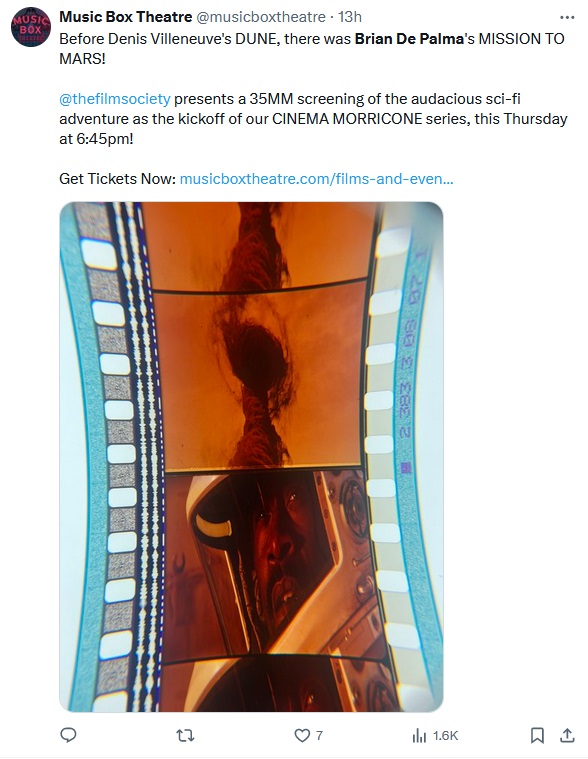

Updated: Monday, March 18, 2024 10:43 PM CDT
Post Comment | View Comments (1) | Permalink | Share This Post
 Hello and welcome to the unofficial Brian De Palma website. Here is the latest news: |
|---|
E-mail
Geoffsongs@aol.com
-------------
Recent Headlines
a la Mod:
Listen to
Donaggio's full score
for Domino online
De Palma/Lehman
rapport at work
in Snakes
De Palma/Lehman
next novel is Terry
De Palma developing
Catch And Kill,
"a horror movie
based on real things
that have happened
in the news"
Supercut video
of De Palma's films
edited by Carl Rodrigue
Washington Post
review of Keesey book
-------------
Exclusive Passion
Interviews:
Brian De Palma
Karoline Herfurth
Leila Rozario
------------
------------
| « | September 2024 | » | ||||
| S | M | T | W | T | F | S |
| 1 | 2 | 3 | 4 | 5 | 6 | 7 |
| 8 | 9 | 10 | 11 | 12 | 13 | 14 |
| 15 | 16 | 17 | 18 | 19 | 20 | 21 |
| 22 | 23 | 24 | 25 | 26 | 27 | 28 |
| 29 | 30 | |||||
De Palma interviewed
in Paris 2002
De Palma discusses
The Black Dahlia 2006

Enthusiasms...
Alfred Hitchcock
The Master Of Suspense
Sergio Leone
and the Infield
Fly Rule
The Filmmaker Who
Came In From The Cold
Jim Emerson on
Greetings & Hi, Mom!
Scarface: Make Way
For The Bad Guy
Deborah Shelton
Official Web Site
Welcome to the
Offices of Death Records



In 1975, Disneyland opened Mission to Mars, a cost-conscious update of their Flight to the Moon attraction, which simulated interplanetary travel using vibrating seats and multiple 16mm projectors. It closed in 1992, and was eventually replaced by Redd Rockett’s Pizza Port. Eight years after its closure, Mission to Mars would enjoy the distinction of being the first Disneyland ride to receive a theatrical film adaptation (preceding The Country Bears, Pirates of the Caribbean, and two different iterations of The Haunted Mansion). If Mission to Mars the attraction was a thrifty repurposing of a Disney holding past its prime, its movie adaptation, an all-ages tentpole budgeted at $100 million and helmed by Scarface and Dressed to Kill director Brian De Palma, was anything but. It’s the year 2020 and the first manned expedition to Mars has successfully landed on the planet’s surface, an unforgivingly hostile landscape that summarily terminates the entire crew, save commander Luke Graham (Don Cheadle). Luke’s best friend Jim McConnell (Gary Sinise), a classic space melodrama hero with a dead wife to make proud, charges ahead on an equally disastrous rescue mission which will kill more of his friends and end with the secrets of the cosmos revealed to the bedraggled survivors. Upon release, Mission to Mars ran afoul of mainstream American critics affronted by its undiluted sentimentality and genial space woo-woo, their dismissals stoking full-throated defenses from Cahiers du Cinéma (who placed it in their top ten of the year alongside films by Chantal Akerman and Edward Yang) and assorted De Palma auteurists for whom the film’s excellence was inextricable from its director’s formal trademarks. Featuring a stately and lush score from frequent De Palma collaborator Ennio Morricone.Preceded by: “Our Lady of the Sphere” (Lawrence Jordan, 1969) – 10 min – 35mm from Canyon Cinema
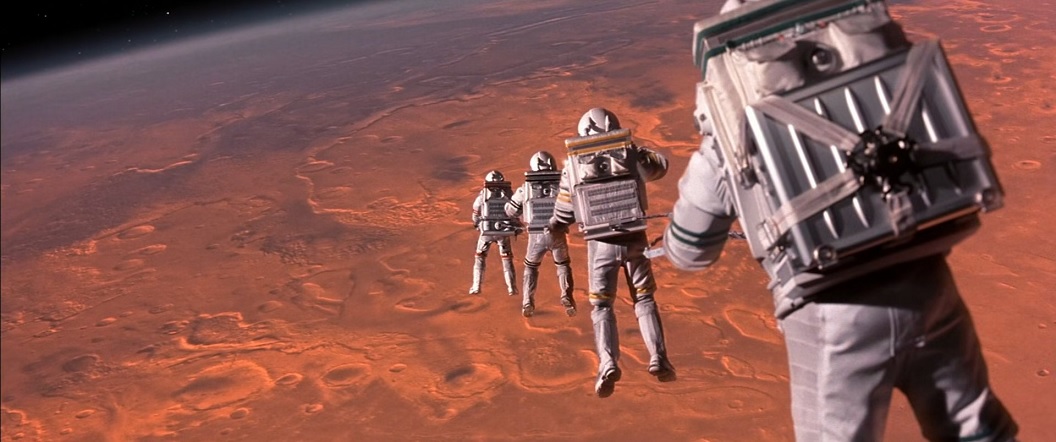
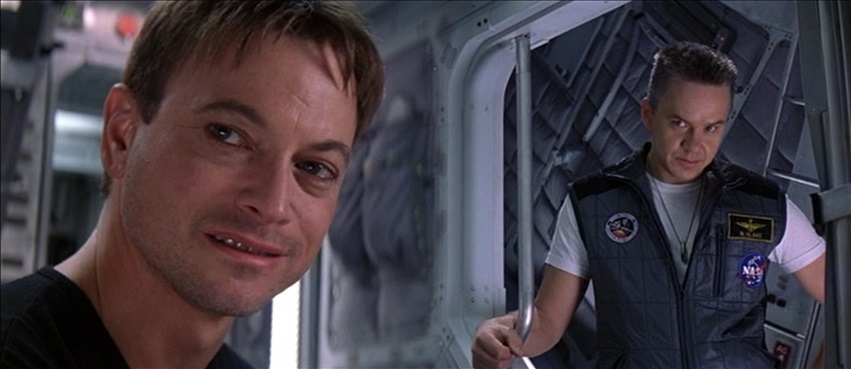
Though he does not have the reputation of Brad Pitt or the acclaim of Sean Penn, in the 1990s, Tim Robbins rapidly established himself as the most reliable leading man in Hollywood, equally adept as both a vulnerable audience insert and a smirking anti-hero. With his slicked-back hairdo and sizeable stature (standing at 2 meters tall), Robbins had a naturalistic watchability that made him the perfect anchor for some of the most acclaimed films of the decade and a muse for vaunted auteurs from Robert Altman to Brian De Palma.In the 21st century, the aging Robbins has shrewdly shifted his attention to supporting roles, including one in Mystic River (2003), which earned him a much-deserved Academy Award. Recently, it has been the role of independent filmmakers to utilize most of his talents and producers at HBO, who cast Robbins as the Secretary of State in the cruelly overlooked miniseries The Brink. And then, of course, there’s his respectable output behind the camera: 1992’s Bob Roberts adapted a cult comedy caricature from Saturday Night Live into one of the finest political satires of the post-Cold War era, whereas Dead Man Walking’s musings about life on death row earned leading lady Susan Sarandon an Oscar.
This top 10 list will act as both an overview of Robbins’ decades-long contributions to American cinema and an evaluation of his finest performances to date, including stone-cold classics and underrated gems.
10. Mission to Mars (2000)
Mission to Mars is certainly the gutsiest film ever to take its name from a Disneyland ride. Brian De Palma‘s direction is typically virtuosic, Ennio Morricone’s score imbues the entire film with sweeping spectacle, and the cast is stacked with some of the era’s most reliable performers. The result is a film both admirable in its ambition and visual clarity but restrained in its execution due to studio interference and shoddy visual effects. Whilst Gary Sinise leads the cast, it’s Robbins who, as Commander Blake, gives the most rewarding performance with a distinctive character arc ending with the ultimate sacrifice and the movie’s most memorable scene.
As Saving Private Ryan realizes, in a story centering on the recovery of a person, the audience’s desire to see the character found is as much motivated by the search party’s likability as it is sympathy for the missing person. For all of its myriad flaws, Mission to Mars understands this, and the dynamics between the traveling space crew are fully realized, and the chemistry between the performers is palpable. Don’t be dissuaded by the poor reviews from some critics. Mission to Mars is a worthwhile revisit whose influence on subsequent sci-fi epics (The Martian in particular) is undeniable.
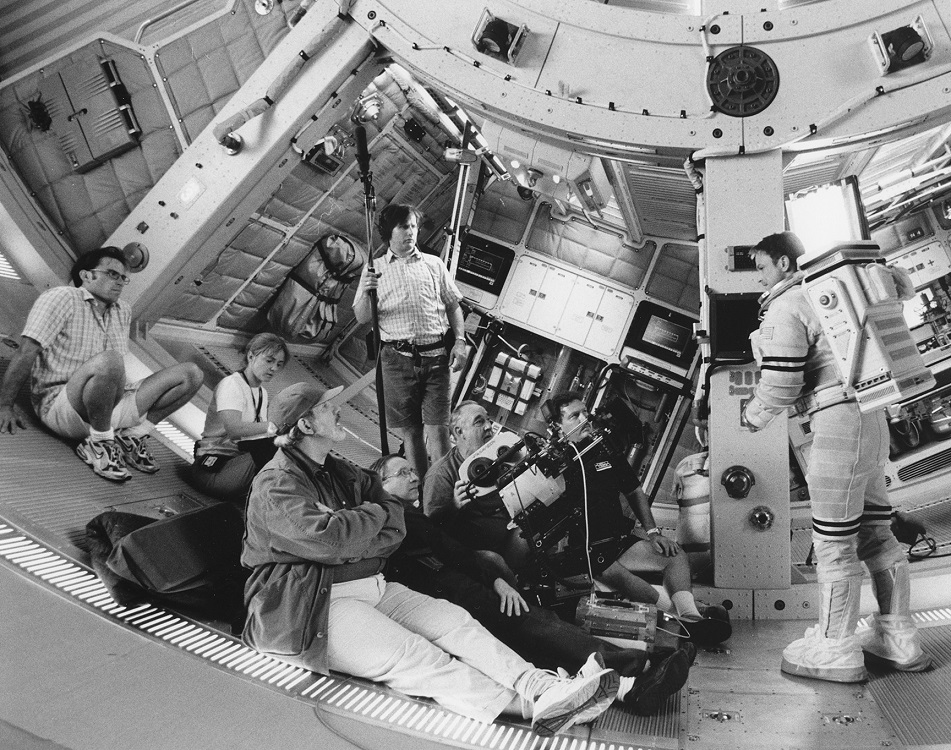
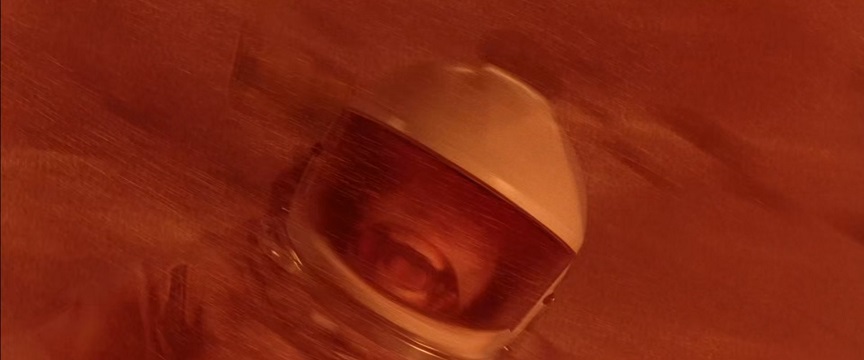
As Disney grows bigger and acquires more properties, there are countless ways for the company to dominate the box office in any given year: a new Star Wars movie, another entry in the Marvel Cinematic Universe, the latest tear-jerking Pixar project, even the long-awaited sequels to James Cameron’s Avatar. Such domination has come at the expense of projects that feel fresh and marginally original—these days, almost everything Mouse House churns out is a sequel, reboot, remake, or an extension of an established cinematic universe. (Even a studio as lauded as Pixar got a little too sequel-happy for its own good before Onward, Soul, and Luca.) But the box-office receipts speak for themselves, and as Disney doubles down on its strategy of maxing out its IP, the company is returning to an unsung resource: theme park rides.Considering the studio is so risk-averse, it’s oddly amusing that theme park movie adaptations have repeatedly come out of the Disney pipeline—it’s a gambit that’s almost always failed. A middling made-for-TV adaptation of Tower of Terror got the ball rolling in 1997, but it wasn’t until the turn of the century that Mouse House started really swinging for the fences: If there’s one thing Mission to Mars (2000), The Country Bears (2002), and The Haunted Mansion (2003) have in common, it’s that their sheer WTF-ness was almost instantly met with quizzical responses. Mission to Mars is perhaps the most notable outlier and was directed by the great Brian De Palma (an auteur who’s as un-Disney as they come); it was based on a ride that was already closed and featured legitimately disturbing death scenes despite being rated PG. (This is also why Mission to Mars unironically rules, scathing reviews be damned.)
The latest in the Disney theme park movie canon, Jungle Cruise, arrives on Friday, and it’s probably not the most encouraging sign that some insiders are already bracing for a less-than-stellar financial return. But Jungle Cruise isn’t so much trying to capture the spirit of the eponymous Disney ride—given that it was recently revamped because of racist caricatures, that’s for the best—as it is trying to ape the multibillion-dollar success story of theme park ride moviemaking: the Pirates of the Caribbean franchise.
When the first Pirates of the Caribbean movie, The Curse of the Black Pearl, was released in 2003, the whole idea of turning an amusement park ride into a blockbuster was ridiculous—especially given Disney’s previous failures in the space. But The Curse of the Black Pearl was a legitimate hit and a swashbuckling adventure so universally admired that Johnny Depp even landed an Oscar nomination. (When you think of performances that get on the Oscars’ radar, Captain Jack Sparrow hardly comes to mind.) The Curse of the Black Pearl was the fourth-highest-grossing movie of the year, and a sequel was inevitable.
Director Gore Verbinski ended up shooting back-to-back sequels, Dead Man’s Chest and At World’s End, to complete a trilogy that broadened the franchise’s fantastical pirate universe—one where, to paraphrase Captain Barbossa, the audience best start believin’ in ghost stories.
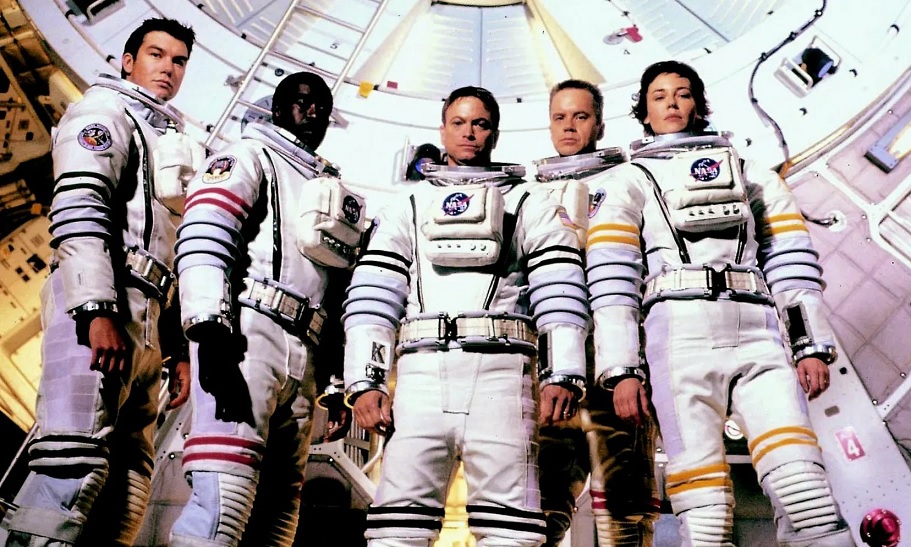
Perri Nemiroff: I just have too many Mission To Mars questions. I think it's also on my brain, because of current events. So, actually, speaking of that, do you ever think about that movie, which I believe took place in 2020, now that we've had some major recent events in that sphere happen in 2021? Just like comparing, contrasting where you guys pictured us being, and where we actually are.Connie Nielsen: I mean, it was so crazy when we were reading the word "twenty-twenty." I don't know what we were thinking that we would have progressed into. You know, technologically, and socially. But what was great was that, in fact, the women were very much part of the mission control. And it was so cool that it was prescient that way, you know. And modern that way, too, you know? Super modern. And then I thought that it was... there were so many parts of the story that, in hindsight, so many people still, even scientists, are finding, well, was there life then on Mars? And those are questions that we were raising at the time.
And so a lot of the science has really held up, and it's worth noting that we worked with Buzz Aldrin. And that we worked with NASA on the whole film. My coach was Story Musgrave, a rocket scientist. And I remember, we were in Vancouver. We were shooting in upper Vancouver, and he invited me out to dinner, and I was just plucking his brain. He was the person who was part of the two-team [of] people who were the first free space walkers. Who repaired the Hubble Telescope when, you remember, it was put up and it didn't work? And so they had to go up there, and actually walk in space, and repair it. And he explained to me how they did that.
And you know, that's one of the things I love the most about being an actor is that you get to have these incredible experiences with real life geniuses that you get to learn from and listen to. And I was obviously so in awe of all of the stuff he showed me. He showed me pictures he'd been taking with his own camera from when he was going around the Earth, and seeing the Earth from outside. And I saw all those incredible pictures.
And he said, "You know, what you see... you see all those incredible patterns and movement and sand, and all this ocean. And it's just like... we have this unique and rare thing to see Earth, and when I'm out there, I really notice that the most extraordinary thing about Earth, is life. And that's where you come in, Connie. You're an artist, and I love what you do, and what you bring. And that's the true beauty of what humans are. It's art." And it was just so beautiful that here was a rocket scientist who thought that artists were the shit.
Perri: So much of that taps into why I'm obsessed with movies in general. It's just the closest I can come to experiencing things that are out of my reach, or even just understanding someone else's truth that is just so polar opposite to mine. I know Brian De Palma has referred to that experience as being relentless. Is that just because he was at the helm of that film, or were you able to feel any of that while you were on set as well?
Connie: Yeah, we were a lot of actors on that set. And I think that we had some problems with the storyline still. I think that the stories were not really resolved in some of the cases, I think. But we also had amazing actors, like Don Cheadle. I just love Don Cheadle, and I just loved working with him, too. And what a fabulous guy that he is, and amazing actor.
I remember, I am standing inside of this giant white space. And I'm asking him [De Palma], what will that creature look like? Just so I know what I'm looking like. Just so that I have a sense of, what am I supposed to do? And it's worth noting that we're inside of what these spacesuits would really look like. We are hoisted up underneath the sky, like underneath the ceiling of the thing, and trying to emotionally react to-- for example, my husband, dying in front of my face in the middle of the mission. And not being able to move a muscle in my body because in space, you don't move. Like, if you move at all, that motion would send me flying through space like a dead stone, you know, or a piece of ice, forever and ever in that direction that I moved.
And so, having to do all of these things and being able to only communicate with my co-stars and with my director via this radio, I am wearing a cold suit underneath it, through which they are pumping ice water so that I don't overheat and die inside of my suit. And, at the same time, you know, when you're then walking, you can't hardly move.
So at this point, we're shooting the scene where I'm supposed to see, what is this mysterious thing that's inside of this piece of ice on Mars. [She thinks for a moment and laughs a little] And so he can't really explain over the radio, so we said, "Do you mind just coming over here and telling us, like, what are we going to be seeing?" And as he walks towards us, he falls over some cables, and he literally gets this contusion on his foot, if he doesn't actually break it. [Laughing at the absurdity of the situation] "It doesn't matter [shaking her head], I'll pretend I understand what I'm seeing!" Because I just literally could not believe that. Yeah, [still laughing] it was relentless that way.
Perri: I understand. It's like, you know, if you've got some frustrations and stressors and you bump your head, it's ten times worse than it really is! [laughter] All right, so this is like, half Mission To Mars, because it's another thing that Brian said that kind of taps into your experience a little. He had mentioned, I believe this was in the documentary about him, that the Hollywood system destroys you, and that that wound up being his last movie in the states. You, on the other hand, based on how you're describing everything, have had a wonderful experience in Hollywood. So what do you think it is about your experiences making movies in Hollywood that keeps you coming back to them?
Connie: I mean, there have been a few times, I am not going to lie. There have been a few times where in the process of making a movie, I have really questioned whether it's a place for women. Because it's been... it's been really difficult at times to stand up for women, on film and in film. Inside of films where the director was given absolute leeway to change the script completely, and make it unrecognizable from the project that you actually originally signed on to. And then you were caught, and you were kind of like, "But my character is not supposed to be this character, and we... what?!?" And then all of a sudden it becomes a two-hander between two guys and now the girl is like the third wheel on the, you know, on the bike here.
And it's just... it's been extremely frustrating. And I think that if you go into that, you have to have an enormous amount of resilience. And you have to know that it's worth fighting for what you are fighting for. And I think I do. I think I just do believe it's worth fighting for. I do think it's worth fighting for films that will ultimately tell different kinds of stories about women than the stories we're telling, or were telling, up to now. And we're still figuring out how to tell those stories, but they're coming, and they're being made. And I think that will change how we treat women in general, and how we see them.
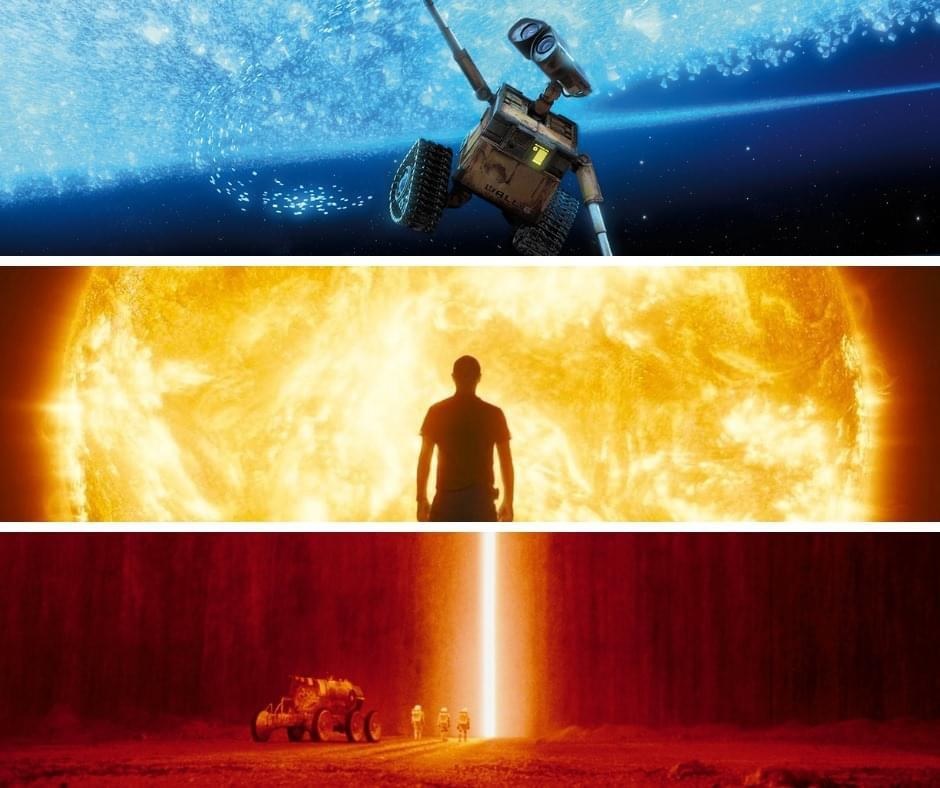
Meanwhile, with NASA landing the new Mars Perseverance rover last Thursday, USA Today's Shayna Murphy posted "5 Mars-themed movies worth watching tonight," and included Mission To Mars on the list. "Inspired by Disney's theme park attraction of the same name," stated Murphy, "Mission To Mars is a visually stunning film by director Brian De Palma, an auteur best known for crime dramas like Scarface (1983) and The Untouchables (1987)."

The Mission To Mars spaceship - the Mars 1. One of the last giant miniatures to have motion control shooting. This model was about 21' or 6.4 meters and was made at Dream Quest Images in Simi Valley California,1999.
Ha! No but the engine section is damaged and blows up in the movie. And I made the damaged engines. 😂
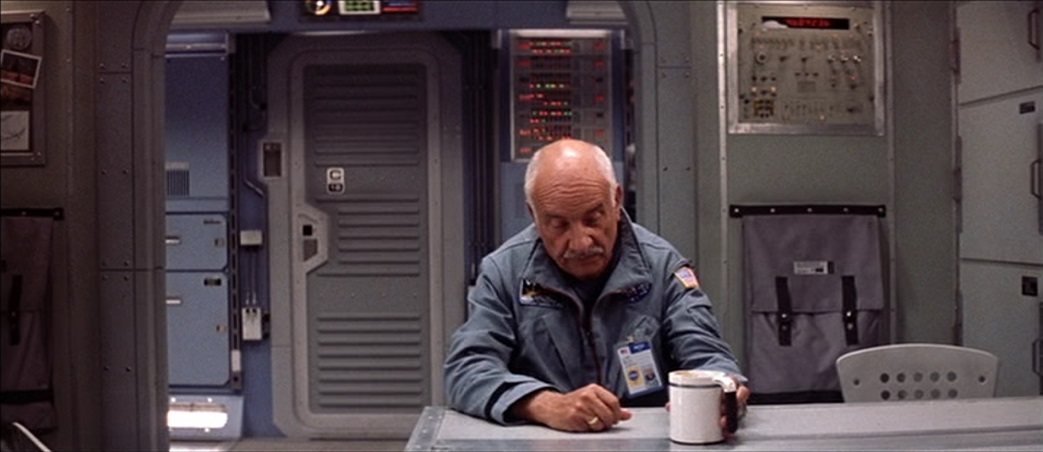
Here's the start of Avellino's lengthy post at Mr. Peel's Sardine Liqueur:
Well, we didn’t know this was going to be the future. Stuck like this, away from the people we’ve known and care about. But even now they stay with us as we close our eyes, wishing we were back with them. It’s the naiveté of youth, I suppose, the dream that you grow up and as the future appears the world will grow with you, eventually turning things into that life one dreams of. But the real future, the one we’re going to get, is always closer than we think and those people just get further away. So by the time we actually get there, it’s too late to do anything about it. That’s when we realize there’s no one else around.Brian De Palma’s 2000 film MISSION TO MARS is set in what was then the future. But revisiting this film during its 20th anniversary is not simply about addressing when it opened but how it actually begins in the year 2020, on June 9th to be exact although the preciseness of the date serves little purpose. It’s still a pretty familiar looking future except that people appear to be drinking boxed beer at a crowded barbecue which, boxed beer aside, hasn’t been happening or at least it shouldn’t—I was going to add that we’re also not going to Mars anytime soon but there’s actually a mission happening, go figure, even if there won’t be any humans onboard. Living in this actual time as we are, if you call this living, we already know that the 2020 of this film has little to do with the reality we currently know even if the film doesn’t spend much time on Earth. My main recollections of seeing this film opening night way back in March of that year at the El Capitan on Hollywood Blvd. are that the packed house violently booed when the end credits rolled and someone threw what looked like a Snapple bottle at the screen. But time changes things. For one, this is a film where a character gets marooned all alone and who the hell knew back then that the very idea of isolation would turn out to have the most to do with what life in 2020 really is. Like many films that have been loudly rejected on opening night, MISSION TO MARS is more interesting than that initial response indicated and even though it does still have more than a few issues, it’s a film striving to be about hope and connection in a way that makes me think a little more fondly about it these days. There’s a lot to figure out right now about the way things are going and even if there aren’t any real answers in the film I’m watching, there’s always the dream that maybe something can still be found there.
As the first ever crew on the surface of Mars explores the red planet, they discover the possibility of water which would allow for earth colonization. But when they try to investigate, the entire team except for Commander Luke Graham (Don Cheadle) is wiped out by a mysterious vortex of massive size leaving the lone astronaut remaining stranded there. When news of this reaches the World Space Station via a message that indicates Luke is still alive, plans for the next ship for Mars are changed to turn it into a rescue mission which will include Commander Woody Blake (Tim Robbins), wife Terri (Connie Nielsen), Phil Ohlmeyer (Jerry O’Connell) and Jim McConnell (Gary Sinise), who gave up his own shot at commanding Mars One when his wife Maggie (Kim Delaney) fell ill and soon died. But months later when their ship begins to orbit Mars things immediately don’t go as planned and once the team reaches the ground to search for Luke, they soon discover the existence of a massive stone face which may lead to the answer of what sort of life once existed on that planet and what may have really happened to it.
For one thing, it’s definitely the second best Brian De Palma film with the word “Mission” in the title but this is of minor importance. Even after all this time MISSION TO MARS is still a tough one to figure out, a film which on the surface doesn’t seem to be anything other than a showcase for spectacular digital effects but somewhere deep down feels like it has other goals in mind that it hasn’t entirely worked out. Maybe it wants to be more of an interior journey into outer space but even with several big names in the cast the characters are never interesting enough to warrant this approach so what’s left becomes the focus on those effects and the way De Palma builds his own visual methods around them. Right from the very first moment as the title flashes onscreen a rocket blasts off, only to be revealed as a toy in a suburban backyard giving the impression the film wants to play with our expectations, finding a way to turn kid stuff into the adult regret of lost dreams and back again, to understand what the dream in those toys meant in the first place. It’s an idea that doesn’t feel entirely formed and the film is forced to pay more attention to all that hardware while still looking for ways around all the expected tropes, like how in place of the expected spectacular launch sequence is a simple transition to the surface of Mars done with a cut from a playful footprint in a backyard on Earth. This is an attempt at hard science fiction which at times seems more interested in finding unexpected ways to tell the story rather than acclimating us to the drama at hand and plays at such a distance that it’s a little too easy to check out early on. There’s no mission control populated with familiar character actors, no cutaways to worried loved ones back home, no bogus conflict between the astronauts played by big names and even an early sequence involving cross cutting that plays with notions of time within the narrative for reasons that still seem a little hazy.
A few plot points, like how Cheadle’s command will presumably be joined at a later date by Mars II commanded by Robbins, seem vague in the way they’re casually discussed but I’m not sure it matters and I’m not sure the director really cares about making such generalities clear. Complicated exposition gets doled out in a way that hasn’t taken into account what anyone watching the film doesn’t know so not enough of it registers, lost to whatever De Palma is actually interested in focusing on. Even when the film opens with one of his patented endless Steadicam shots it’s not about the technology surrounding a Mars launch but the simple act of the astronauts socializing at a farewell barbecue, giving us more info about the relationships than the actual mission which is fine but the mundane setting doesn’t seem to warrant such a complex visual approach (which features a cut partway through as if a decision was made in editing to rush things along) and it also makes the film feel unexpectedly small with the interactions never registering all that much as the camera swirls around them. There’s so little drama in the friendships of the main characters which means right from the start we’re facing a Brian De Palma film where everyone gets along, no ominous foreshadowing in the air, so earnest that the scenes barely seem about anything.
The way the writing credits read (screenplay by Jim Thomas and John Thomas & Graham Yost, story by Lowell Cannon & Jim Thomas and John Thomas) along with the very nature of the project (presumably inspired by the Disneyland ride that closed back in ’92 but it has the Touchstone Pictures logo) one imagines many, many drafts of various scripts written but the story still feels either not quite smoothed over or maybe had whole sections deleted for whatever reason. One major plot point is even relayed via news delivered remotely at another location and there’s something to be said about how the film seems more interested in dwelling for a long moment on the sight of Armin Mueller-Stahl silently drinking a cup of coffee than the spectacular landing we didn’t get to see. But the question is are there really plot points to this film or just several specific events leading up to the final revelation. So much of what appeals about films directed by Brian De Palma more than the necessities of story structure is his portrayal of the madness that surrounds the main characters as they try to make sense of this increasingly insane world while the plot happens around them. The characters in this film are all good and pure, which makes sense since they’re astronauts, but the earnestness doesn’t feel all that fleshed out as if he doesn’t quite know how to make it ever seem genuine. They can each be described simply via who means the most to them, nothing more; Woody and Terri are the happy couple, Jim is sad because his wife died, Luke misses his son back on Earth and Phil is the joker who constructs the DNA of his dream woman using M&M’s in zero gravity. There’s no real conflict between the characters at all beyond how to address whatever any given immediate issue might be, saying things like “Let’s work the problem” as they get to it, all of them so idealized as heroes that there isn’t much else to them beyond the perfection. These are the types who normally get sacrificed, if not totally destroyed, in the cruel world of De Palma films so maybe in being forced to portray people without flaws it removes all the fun and doesn’t replace it with anything particularly interesting.
This has never been a director known for showing much interest in healthy relationships between men and women (maybe with the exception of Kevin Costner as Eliot Ness and Patricia Clarkson as “Ness’ Wife” in THE UNTOUCHABLES) which makes it feel like there’s not much to portray here beyond the simple idealization. Tim Robins and Connie Nielsen are played as being totally devoted to each other, such a mirror image of Gary Sinise and his late wife played in flashback by Kim Delaney that it almost feels a little confusing as if husband-wife missions have somehow become a NASA requirement in the future. But even if the perfection plays like a neon sign that something bad has to happen, this is still a rare Brian De Palma film with next to no cynicism, no irony or real sense of the fates conspiring against all the goodness in the universe. Even when a sacrifice has to be made, even when an American flag is planted upon arrival at the new planet, it seems to insist on holding onto some kind of optimism so the movie is never embarrassed by its own inherent dorkiness coming out of the science fiction technobabble or how much these people love each other as if it wants to actually believe in this dream of everything being ok.
Newer | Latest | Older